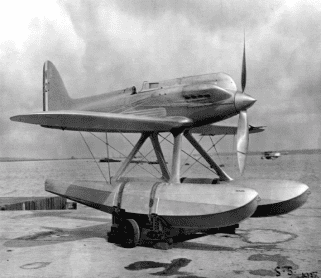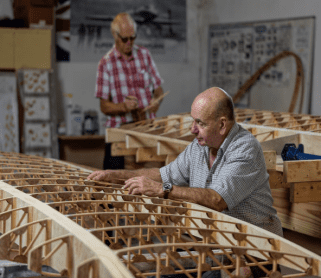The extraordinary challenge – to rebuild an airworthy Supermarine S5 Seaplane – is being led by one of TAG
Aviation’s own pilots, Will Hosie. With over 22,000 flying hours, Will has a wealth of experience in aircraft
such as Airbus, Boeing, McDonnell Douglas, Beechcraft, Bombardier, de Havilland and various seaplanes plus
aerobatics and charity flights.
Aviation heritage is an important part of TAG’s story, as we lead by innovation and inspiration, which is why
we’re excited to get on board with Will and the team of pilots, engineers, volunteers and supporters.
With plans to involve universities and schools local to the project sites of Bodmin in Cornwall and later
Calshot in Southampton, the charity hopes to not only educate but also inspire young people to take up
aeronautics and engineering whilst discovering a love of aviation.
The world famous Supermarine Spitfire didn’t suddenly appear, it was the result of a long development
programme run by its designer RJ Mitchell, culminating in the Supermarine S5 and S6 seaplanes.
Without these aircraft, Mitchell’s Spitfire would never have been designed and built. They fundamentally
changed how engineers thought about aircraft, impacting their design for decades to come. The S5 and S6 are essential elements of our national and engineering heritage. But, unlike the Spitfire, very few people know of them, and they are in danger of being forgotten.
These British aircraft competed with the French, Italians and Americans in the Schneider Trophy contests
from 1913 to 1931. In the 1920s and 30s the Schneider Trophy, a speed contest for seaplanes, was arguably
the most exciting and glamorous sporting event in the world. Cutting edge technologies and innovations in
construction and aerodynamics were developed to compete for the trophy, pushing huge advancements in
aircraft design. Britain won three consecutive contests and thereby won the trophy outright and forever,
setting a new World Air Speed Record for the time.
Now, almost 100 years later, it is more important than ever to keep the heritage of the S5 alive. By 2027, the
centenary of her victory in the Schneider Trophy, she will be flying again. The aim is to bring this magnificent
flying machine back to life, to recreate the thrill and excitement of early aviation for a new generation.
The project hasn’t been without its setbacks. COVID meant the team had to move the build from Bordeaux,
France to Bodmin, UK – and then a devastating fire struck the hanger. The drawings, the build and the materials were all lost, which meant starting again from scratch. And of course, the materials are now at least 30% more expensive. Despite all of this, plans are getting back on track and TAG are excited to be involved in the future progress of the rebirth of this aviation icon.
pressoffice@tagaviation.com • www.tagaviation.com
The whole inspiring story can be found on the charity’s website www.supermarineseaplane.co.uk and more
information on opportunities to invest in and support the project can be found on their Crowdfunder site
www.crowdfunder.co.uk/p/supermarineseaplane

The Schnider Trophy winning Supermarine S5 Seaplane in 1927

Building the wings required technical expertise
About TAG Aviation:
With a history dating back to 1966, TAG Aviation has pioneered industry standards within the
business aviation world. Focusing on client services, safety systems, operational excellence and
bespoke training. TAG offers a broad range of services including aircraft management, charter,
maintenance, training and an FBO in Macau. Employing around 500 staff worldwide with bases in
the UK, Geneva, Malta, Hong Kong, Singapore, Macau, Bahrain and Beijing. Please find more
information about us at www.tagaviation.com
Press Contact:
pressoffice@tagaviation.com
